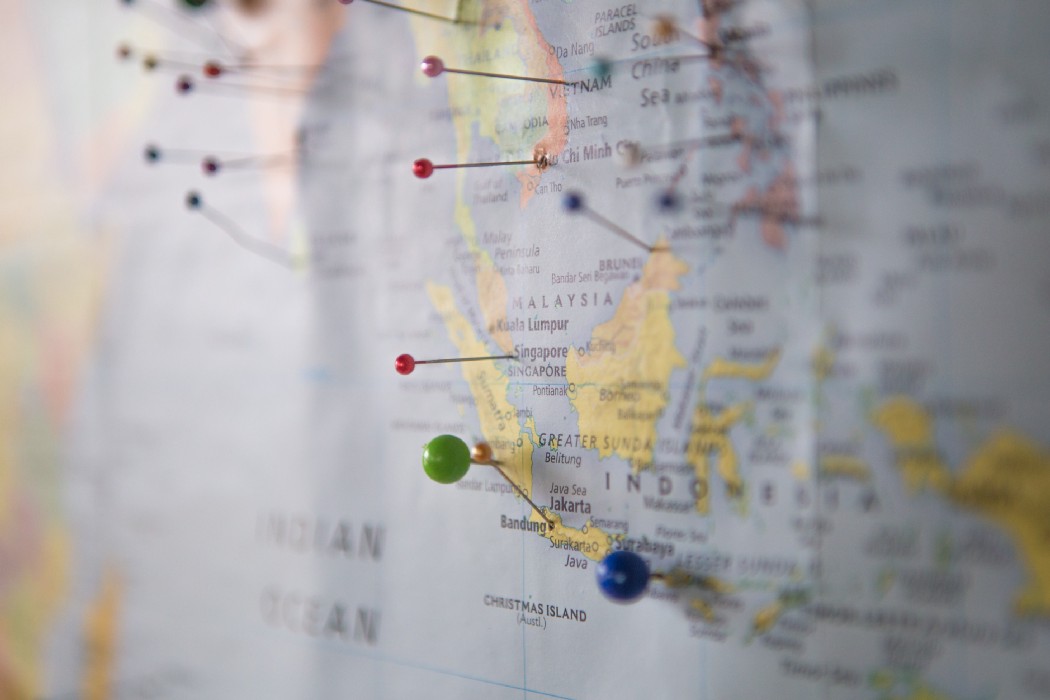Canadians are currently experiencing record-breaking levels of cabin fever. As we socially distance and stay home to stem the spread of COVID-19, many of us are longing to set our eyes on a slightly more exotic view than the one outside our living room windows. Summer’s just around the corner, and normally Canadians would be planning their summer holidays. But normal is on hiatus: current travel restrictions and quarantine rules are, rightfully so, putting the brakes on leisure travel. While we don’t know exactly when restrictions on travel will be lifted, Canadians will be eager for a change of scenery once they are. But will we be making the same travel choices, and will all of our travel options be available?

Photo by Julentto Photography on Unsplash
Airlines look for a soft landing
Perhaps the most obvious impact of COVID-19 is being felt in the commercial air travel sector, a result of international travel restrictions and a bottoming-out of domestic demand. In response, carriers are slashing scheduled capacity by as much as 85–90% and cutting their workforces. Air Canada temporarily laid off over 20,000 staff, but has since announced the decision to retroactively rehire 16,500 after confirming their eligibility for the Canadian emergency wage subsidy program. WestJet has reduced its workforce by nearly half, shedding 6,900 jobs through layoffs, buyouts, and early retirement. Smaller airlines like Porter and Air Transat have completely suspended operations, leaving some to wonder if, not when, they will resume. Remember Greyhound Air, Canada 3000, Jetsgo, and Zoom Airlines?
John McKenna, president of the Air Transport Association of Canada, doesn’t expect every airline will be able to recover from the impacts of COVID-19. It’s not hard to understand why, given that airlines have high operating costs and thin profit margins — Air Canada’s was 8.6% in 2019 — and rely on high loads and all those ancillary fees from food, upgrades and baggage to make that margin. While airline labour and fuel costs (their two biggest expenses) have all but been eliminated, all those grounded airplanes still present maintenance, lease, and depreciation costs.
Historically, the Canadian government has seen the commercial airline industry through hard times, but its focus has been on ensuring a strong national air network to support government and business, rather than leisure-focussed operators that specialize in carrying Canadians to sunny holiday destinations. So far, direct help for airlines hasn’t been announced, though Transport Canada has waived rent fees for airport authorities to the end of 2020, and wage subsidies are available for all Canadian businesses affected by COVID-19.
The government alone won’t be able to save every Canadian airline — consumer demand will be the most important factor in the sector’s recovery. Some analysts, however, are predicting demand for air travel will not rebound to pre-pandemic levels until mid-2021. Demand for leisure travel, particularly big-ticket holiday packages and long-haul flights, relies on strong discretionary spending, so the post-COVID-19 Canadian consumer economy will, to a large extent, dictate how quickly demand will rebound. Business travel, however, will help the airline recovery, thanks both to bookings that typically garner higher profit margins and a level of demand less sensitive to economic factors than leisure travel.
Cruise lines face rough seas
Responding to the now-infamous outbreaks of COVID-19 on board several large ships, the entire cruising industry is essentially paused. Canada announced a ban on cruise ships with more than 500 passengers from Canadian ports on March 13, 2020, and the Centers for Disease Control and Prevention issued a No Sail Order the following day. As other countries around the globe followed suit, the industry voluntarily suspended operations and the possibility of a summer cruising season, popular in Europe and North America, was thrown into question.
Cruise lines will face much bigger hurdles than the lifting of travel restrictions to see a return of consumer demand and recovery, compared to other travel sectors. First of all, the cruising industry is complex and relies on the careful coordination of staff and crew, provisioning, scheduling port berths, on-shore partners and, of course, the ability of passengers to reach their departure port. Unpausing operations will be no simple feat. But more importantly, travelers will need to be convinced that cruising is safe and that enough measures are in place to ensure the health of passengers and staff, such as screening for illness, cleaning protocols, and disaster planning, if they are to buoy demand.
The cruising industry, like airlines, face high operating costs and low profit margins, relying on maximizing booking capacity in order to make any profit, but without the benefit of business travel to fall back on. Industry analysts expect the three largest cruise companies — Carnival, Norwegian, and Royal Caribbean, which together provide almost 80% of global capacity — are well positioned to weather the storm, but it’s unclear if demand will ever reach levels previously seen. An industry that tends to cater to older travelers, a population more at risk from COVID-19, may also have trouble attracting a new set of younger guests, as research has shown millennials are not as interested in cruising and tend to opt for more sustainable, adventure-packed holidays. Further, facing a long list of industry sectors looking for bailouts, government may also be hesitant to assist businesses that are incorporated on foreign soil and considered non-essential services.
Train and bus travel service reductions
Though lower demand has triggered VIA Rail Canada to cut back on their routes, on-board services, and schedule, passenger trains are still moving in Canada. Longer, more leisurely routes from Montreal to Halifax and Toronto to Vancouver have been cancelled until May 1 and June 1, respectively. In the west, the Rocky Mountaineer has delayed the start of their 2020 travel season until July 1. Greyhound has also seen a decline in demand, and has reduced schedules and suspended some routes in response. Given the essential nature of regional bus and rail travel for countless Canadians, particularly in smaller cities and towns, there is little doubt that services will resume along with demand, once restrictions are relaxed.
You’ll always need a place to stay
Demand for leisure accommodations has also plummeted, with occupancy rates for hotels falling to around 10% in the latter part of March. Some hotels, like Ottawa’s famous Chateau Laurier, have closed completely, while others are making drastic staff cuts, as they serve only a handful of guests. According to the Hotel Association of Canada, there have been 4,100 hotel closures, layoffs of over 250,000 workers, and the industry expects some hotel businesses will fail as a result of the pandemic.
To what level, and when, demand for accommodation recovers will ultimately be determined by how well other travel subsectors improve; should domestic travel demand rebound before international travel, hotels might see their international clientele replaced by domestic guests. As major events like conferences, concerts, and festivals return across Canada, so will demand for accommodation — no matter how people get there. Hotels in major centres should also see a return of business travelers as companies lift their own travel restrictions and resume regular operations, though demand for business travel tends to be squeezed by any economic contraction.
Time for a road trip?
This summer could see a return to the type of leisure travel many of us remember from childhood, when Canadians packed up their family cars and headed to cottage country, campgrounds, and roadside motels. Interprovincial or even in-province travel may be the first opportunity for Canadians to enjoy time away from home, depending on where and when domestic and international travel restrictions are lifted. If gas prices remain low and airline schedules are limited, Canadians may opt to take to the highways to explore our own country and satisfy a pent-up wanderlust. Best of all, with online research, booking, and navigation, folding huge maps and searching for glowing vacancy signs in the dark will remain childhood memories.
Journey to the unknown
Leisure travel demand is notoriously hard to predict because it’s emotional — for example, it’s not unusual for Canadian airlines to experience a big bump in new bookings to warm destinations on days when major cities endure a bad snowstorm — so it’s difficult to say exactly what Canadians will be in the mood for when they once again look to leisure travel. In light of COVID-19, travelers will not only be weighing safety perceptions, personal finances, quarantine rules, and government-issued travel advisories, they’ll also be shopping in a different travel marketplace, likely with fewer options. But one thing is certain: once we “flatten the curve,” we’ll all be eager to see what’s beyond the next bend in the road.

Photo by Capturing the human heart. on Unsplash
